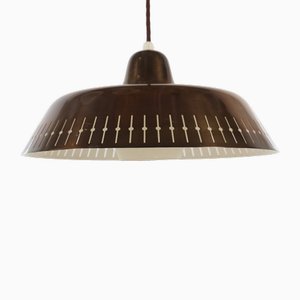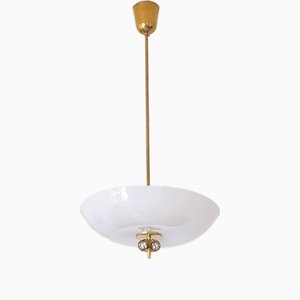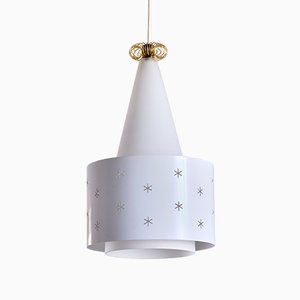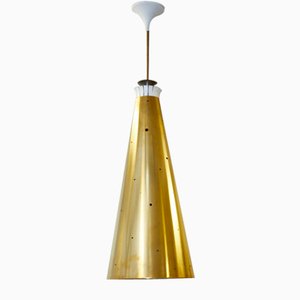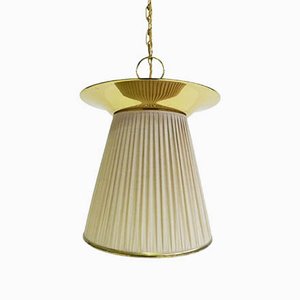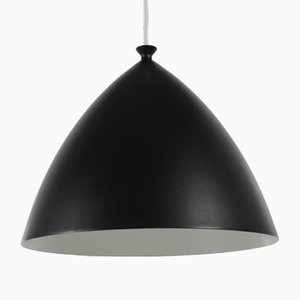
Finnish industrial designer Paavo Tynell was born in Helsinki in 1890. During his formative years, Tynell apprenticed as a blacksmith, after which he began working for Finnish metalsmith Koru Oy. During his time there, he also studied at the Helsinki University of Industrial Arts. In 1913, he was awarded the title of master craftsman.
In 1918, Tynell co-founded the metalwork and lighting company Oy Taito Ab; his partners included Gösta Serlachius, Emil Wickström, Eric Ehrström, and Frans Nykänen. In its early years, the company focused on interior and exterior metalwork, such as statues, railings, and silverware. During the 1930s, however, the company began producing lamps for the lighting sector. Both Alvar Aalto and Kaj Franck designed for the company at the start of their soon-to-be successful careers.
Aalto and Tynell formed a long-lasting friendship that resulted in Tynell designing lighting for Aalto's company Artek, particularly for various private and public commissions like the Paimio Sanatorium (1929-33), the Savoy Restaurant (1937), and the Viipuri Library (1935). Tynell, who also designed jewelry, forged the wedding rings for Aalto and his wife, Aino Mandelin Aalto.
In 1947, Tynell began working with the New York design gallery, showroom, and restaurant Finland House, which showcased his work alongside other Finnish designers. His success in New York led to design partnerships with American lighting design companies Lightcraft and Lightolier, where he worked beside American industrial designer Gerald Thurston. During this time, his designs were marketed under the Finland House name but continued to be produced by his company in Helsinki.
Tynell worked as the CEO and chief designer of Oy Taito Ab until his retirement in 1953. The company was sold to Finnish lighting company Idman Oy, which Tynell had been cooperating with over the years. Idman restructured the company and production under the new name. Tynell designed for Iman until the mid-1960s, while also working as a freelance designer for many other companies in Finland and abroad.
Notably, during the 1950s, Tynell collaborated with architect and interior designer Aarne Ervi, who featured Tynell’s lighting designs in many of his projects, including the Tapiola Housing Project in Espoo, Finland, various private residences, and a power plant located in northern Finland.
Known for their delicate aesthetic, Tynell’s designs often utilize perforated metal and brass and reference nature through stylized leaves, vines, and snowflakes. From the 1930s throughout the 1950s, he was considered one of Finland’s most successful lighting designers, celebrated for his contributions to the Sokos Hotel and its penthouse lounge Café Vakuuna (both 1952); the office of the Secretary General of United Nations in the United States (1952-5); the Lasipalatsi building in Helsinki; and the Helsinki Central Railway Station.
Over the course of his illustrious career, Tynell received many awards and accolades, including first prize for Best Lighting Design at the American Interior Decorator’s Competition (1950), as well as recognition at the Barcelona World Exhibition (1929) and Milan’s Triennale (1933).
Tynell passed away in 1973 in Helsinki.

